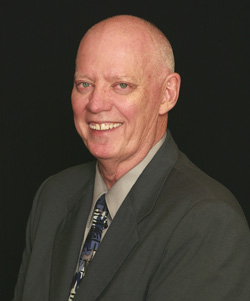Chronic pain: Good intentions

ALAMOSA — San Luis Valley Health Chief Medical Officer Dr. Gregory McAuliffe explained that the chronic pain contract, which has been in place since about 2012 with some revisions afterwards, arose out of local health providers’ efforts to “get our arms around this issue we are having with opioid addiction.”
One way to deal with it was to have the same pain contract for all medical facilities, whether it was the Rio Grande Hospital, San Luis Valley Health, Valley-Wide Health Systems or Conejos County Hospital, McAuliffe explained.
“We will send the message we all want the same thing,” McAuliffe said. “The driving force behind this document is patient safety because we are dealing with drugs that are extremely dangerous. We see people overdosing and dying on these drugs. We want to do everything we can to have a partnership with our patients who are taking these medicines to provide the highest level of safety we possibly can.”
McAuliffe said there was no intention for the form to be offensive, and its authors are open to hearing how it could be improved.
“It really is around keeping our patients safe in their use of very dangerous medicines.”
Anyone who is on a controlled substance for more than 90 days is expected to sign this agreement, he explained.
“I think we have a good form. It has stood the test of time in our own community,” he said.
McAuliffe said there have been a few patients who have balked at the form “because it holds the patients accountable.”
By signing the form the patient agrees to numerous conditions such as not using illegal drugs, not sharing, selling or trading medication, not obtaining controlled medications from other providers, making sure medications are not lost or stolen because they will not be replaced, only refilling medications during office hours (not in the emergency room, evenings or by mail), agreeing to blood or urine tests and bringing medicines in for pill counts when asked.
McAuliffe said health care providers have asked patients to bring in their medicines if they suspected someone was sharing their pills.
Testing the urine will also determine if the patient is actually taking the medication, McAuliffe said, because sometimes people will sell rather than take their medication.
The ability for medical providers to check to make sure someone is not receiving medications from more than one provider (a condition to which the patient agrees in the pain contract) has greatly reduced that problem, McAuliffe said.
Marijuana is a tricky subject because the pain contract states that the patient will not use illegal drugs, and while marijuana is not technically illegal in the state of Colorado, McAuliffe said, it is still a Schedule 1 drug with the DEA (Drug Enforcement Administration) who has authority over providers to prescribe drugs.
“I think our providers are using good clear judgment around that,” he said.
He said marijuana use is not an automatic out for patients under the pain contract.
McAuliffe said no provider in the SLV Health organization prescribes medical marijuana.
Since the pain contract was instituted — along with other efforts to reduce opioid use — the number of opioid prescriptions decreased by at least 25 percent in the Valley between 2012 and 2016, with some opioid prescriptions probably decreasing by a greater percentage than that, McAuliffe said.
“It’s proof positive that the cooperation has reduced the use of opioids,” he said.
He added that many of those patients who formerly took opioids are being successfully treated without those medications.
One of the ways medical providers are reducing dependence on opioids, McAuliffe added, is to use non-narcotic pain modalities in acute situations. These might include physical therapy, chiropractic and acupuncture.
McAuliffe acknowledged there are people who need ongoing pain medication, and the medical providers are working with those folks.
“We are going to support those patients who have a true need for ongoing narcotic pain medication,” he said. “We are not trying to interfere with appropriate use of these medications. It’s the inappropriate use we are trying to get a handle on.”
Some patients in the past were receiving these types of medications that did not help them but did create an addiction, he said.
Unfortunately, “some of those people who were using opioids have made the switch to heroin,” which is inexpensive, McAuliffe explained. Providers are trying to find help for heroin addicts, such as medication assisted treatments, but funding for those programs is limited.
“We continue to look at ways we can do more of that,” he said.
McAuliffe said medical providers try to have a meaningful partnership with their patients.
“Part of that is being respectful to each other,” he said. “When some patients come in and don’t get what they want, they feel not respected. It happens.”
He added, “I hope we are treating every patient respectfully. Every patient should be treated professionally and respectfully.”
This is part two in a series called "Chronic pain: Solutions and concerns." Click here for part one and here for part three.



